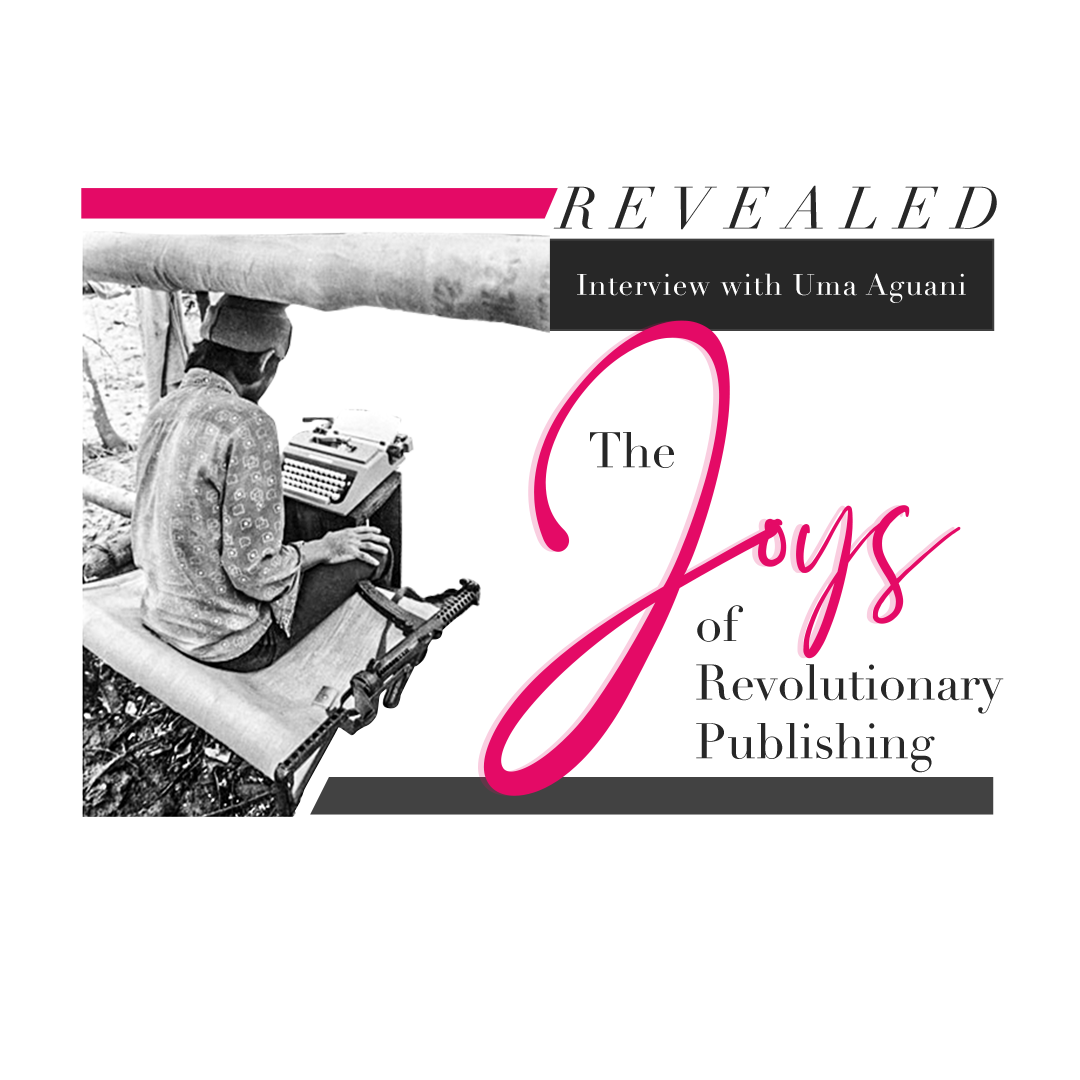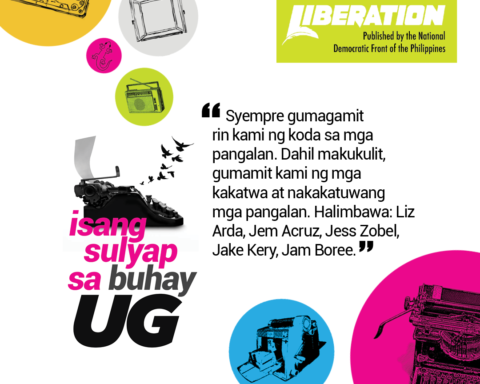We can never have enough of the “masters” of revolutionary propaganda—those who blazed the trail and/or worked for the many underground publications of the revolutionary movement. They worked far from the ease the current technology provides—typewriters, V-type silkscreen, stencils and mimeo machines—way beyond the imagination of today’s youth. They have set the standards from which the current crop of propagandists have carried on and continue to better and master.
Liberation is fortunate to have interviewed Uma Aguani, who wrote for various underground publications during martial law, for Ang Bayan, the longest, and with the best writers and editors the movement could have, among them, journalist Antonio “Manong Tony” Zumel, who also became senior adviser of the NDFP negotiating panel. Uma is also staff of Liberation International, the publication of the Information Office of the NDFP-International.
Lessons from the underground newsroom
All throughout the interview, Uma Aguani underscored the importance of the collective in all aspects of propaganda work, specifically in coming out publications such as Ang Bayan (AB) or Liberation.
The collective is very important, said Aguani. To quote one kasama (comrade): “What sets our revolutionary newsroom apart is that everyone assumed responsibility for the entire process (and for each other too). Each one worked on an individual assignment while critiquing and contributing to the articles of everyone else. Each article that found print was a collective product and everyone in the unit acknowledged this as fact.
Among their articles, Uma remembered the stories about mass work and integration, experiences of kasamas in organizing, life in the countryside, the peculiar situation and experiences of migrant workers, and the life in guerrilla zones and tactical operations of the New People’s Army were popular among readers. Interviews among revolutionaries also proved to be hits.
Here’s the full interview with Uma Aguani.
Liberation: What was it like to be in a UG news room?
Uma Aguani: There were a lot of discussions on how to handle an article or an editorial, what to focus on, what issues must be raised, how to handle information and data. Sometimes the discussions were heated especially if it concerned principles, strategy, and tactics. But at the end of the meeting, these were usually resolved.
Press work, of course, included choosing what articles to put out and what angle or focus to use. Articles were then assigned to individual members. Draft articles were submitted for editing, copyreading, proofreading, etc. We collectively edited the articles. After all the articles had been finalized, we typed them on stencils for distribution to different regions. Depending on the capacity of the regions, these were printed through V-type silkscreen or mimeographing machines.
In our case, a room was always delegated as the press room/working room where the typewriters, mimeo machine, V-type stencils and files were kept. But most of the time the members of the team do their writing in their own rooms or in a favorite spot in the house.
Typewriters
Our tools consisted of typewriters for writing, along with mimeo machine and silkscreen for printing.
But the typewriter, with all its tick, click, and clack was a cause of concern to all of us in the underground. Remembering it now, I was amazed by the creativity of comrades in reducing the sound of typing.
The press room was usually sound-proofed to prevent neighbors from hearing our endless typing. Once, our collective received a very old air-con that had been used in a motel owned by an ally. But instead of coming out with cold air it gives off hot air. However, we kept it turned on to diffuse the sound of the typewriters. So, one had to get out of the room from time-to-time for cooler air.
Another device to tone down typing sound was a transparent box made of wood and glass to encase the typewriter with enough space for our hands to type. It did drown the noise of typing but we needed time to get used to it because hand movements were constrained.
We were partial though in procuring and using the semi-standard Olivetti typewriter then, because the noise of the typing was not so loud, aside from the fact that we get the machine cheaper from an ally working at Olivetti.
In some instances, we had to create a story to explain the constant typing to our neighbors. One story was about Manong (Tony Zumel) being a professor on leave from his teaching and was writing a novel/book. Another was of a PhD student doing her doctoral thesis.
How did you survive the attacks of the Marcos dictatorship?
A good relationship among kasamas is pivotal for the collective. Each member of the collective was ever mindful of ensuring the well-being and safety of one and all. Similarly important is relying on and trusting the masses and comrades in safeguarding us from being detected and arrested by the enemy.
We were always mindful of these security rules and regulations. Following security rules was a must whether one was in the underground or aboveground. Precautions for safety and security were a must to enable everyone to effectively fulfill duties and tasks in the movement. Paying attention to everyday news, warnings, and keenly analyzing the situation were vital.
We tried to adjust to situations we were in and made sure we fulfilled our tasks. We were very creative in responding to changes in our situations.
One thing that helped us was our integration with the masses—whether in cities, towns, or countryside. Having a good story for the neighbors when living outside the guerrilla zones and in urban areas was crucial. Members of the unit tried to relate with neighbors to avoid their curiosity. In some occasions, we even joined in the block rosary and invited neighbors to the house during special events such as fiestas. We took the initiative to be the friendly neighbor and get acquainted with the community.
Was there a time that your UG press was busted and you were arrested?
There were times when we had to hurriedly leave the house because comrades who knew the address of our staff house had been arrested. Come to think of it, problems that affected the security of the collective arose from actions of the kasamas who were not part of the collective but who had access to the house.
Our closest brush with getting captured by the enemy happened in the countryside. The enemy received intelligence report that a ranking commander of the people’s army was in the vicinity so they launched an operation of 200 soldiers to search and cordon off the area. It was our trust in the masses and their courage and protection that helped us escape the cordon of the enemy.
We were very new to the area having arrived only a day before. Walking from one barrio to another during the night, sleeping in the kogonan (cogon field) and watching spotter planes do reconnaissance, then seeing armed kasamas approaching to pick you up from the kogonan —that was an experience I cannot forget. I cried when I saw the kasamas because I knew we would be okay and that feeling of safety engulfed me.
On the other hand, being surrounded by two companies of enemy troops was another experience altogether and such an experience could really make you pee in your pants. But I didn’t.
Also, there was a time when we were based in a city that a raiding team missed us by just two minutes. We saw the raiding team coming from the highway so kasamas had to jump from the back fence. One kasama was several months pregnant so she couldn’t jump. We just had to pretend to be part of the curious neighbors that congregated in front of the street. Unfortunately, one kasama who was in charge of printing the publication was arrested. Even though he saw the danger signal on (we used signals around the house in those days) he entered the house because he saw the door was open. But it was too late for him. The military forces were already inside, waiting.
Manong Tony always said we had to come out with our publications even during times of arrests, raids, etc. That we should not let enemy operations interrupt our publications from being printed and distributed, because the people are waiting to hear news from the countryside, the picket lines, the communities, the victories of the people’s army—and to read poetry. That is why we were very determined to print no matter the situation. And I am proud to say we did it!
What were your most cherished memories of this period?
First would be the time spent with the masses and learning from them, which was enriching. Listening to kasamas narrate their rich experiences in the countryside and writing stories about these to share with the readers were also precious.
In our collective, I found fulfillment in solving differences among kasamas to avoid these from leading to antagonism. To do this, we have to take into account the backgrounds of the kasamas.
I also can’t forget the satisfaction one felt after seeing a printed copy of the publication. Allies eagerly waited for a copy of the publication to hear the latest news on the revolutionary movement. Our stories made them hopeful.
Best Practices
- Definite schedule for issue planning and issue discussion; farming out writing assignments, and assessment of every issue.
- Disciplined adherence to deadline.
- Interaction with the masses to gather data on their situation and experience. This additionally inspires one to fulfill the tasks at hand.
- Coming out with a questionnaire on the publication from time-to-time helps improve the work.
- Creating an official stylebook of the publication.
- Regular session of Criticism-Self-criticism (CSC) after assessment of work.
Funny Moments
There were many. The kasamas had a bagful of corny jokes. Maraming kenkoy at jokesters sa grupo. We loved telling anecdotes and playing tricks on one another. But our experiences in the countryside topped them all. Off-hand, I remember these:
- Trying to balance a typewriter, backpack, and pots and pans but failing, then finding yourself fallen into the muddy ricefield and the kasamas laughing at you. You got mad at first but soon found yourself laughing with them.
- Your kubo (hut) collapsed in the middle of the night. One would hear a deafening silence followed by chuckling and boisterous laughter that reverberated throughout the camp because kasamas thought you and your husband were exercising marital bliss. Truth was the kubo structure had weakened because it became a tambayan (hangout) of kasamas on their way to the camp kitchen or library.
- Trying to shoo the pigs away while doing your morning constitution in a hillside pit latrine and the hogs waiting for their “breakfast”. However, I did manage. I guess the long stick, called magic wand by kasamas, helped.
- Watching funny movies when we were able to borrow a video player (Mel Brooks’ History of the World and To Be or Not to Be, and Home Alone come to mind). You should have heard the laughter of kasamas while watching these films. It was really nice to see them relax. Remember we were coming out with Ang Bayan twice a month.
You were also part of the Liberation International (LI). Why was there an international edition of the Liberation?
I think LI came out in 1994 to project the legal and underground struggle of the people internationally. Liberation was not coming out then and there was a need for a publication to project the struggle especially the Second Great Rectification and the peace negotiations. There was a need to vigorously project the NDFP’s agenda/program for peace.
LI’s target audience were the Filipinos abroad, the solidarity community, the international movements, organizations and parties, and governments and friends we were relating with.
Was it easier to publish the LI compared to when you were still publishing in the country during martial law?
I think it was easier to publish LI because the political environment outside the country is freer. You feel a little more secure and safe. Publishing progressive and even revolutionary publications are allowed and legal. You can openly sell and/or distribute LI. But getting news, data and information on what is happening in the homefront was more difficult during the early days of LI. Also, you long for the “feel” of being where the action really is. The excitement one feels, for example, when covering a mass action/rally or a strike, demolition of urban poor communities, etc.
That’s why we made it a point to interview visitors and guests and regularly read the revolutionary publications, publications of the legal mass movement and newspapers and magazines. We also have easy access to the publications of other revolutionary and/or progressive parties, movements and organizations. Staff members were able to attend/cover international conferences, seminars, political fiestas, etc. (Iliya Makalipay) ###






